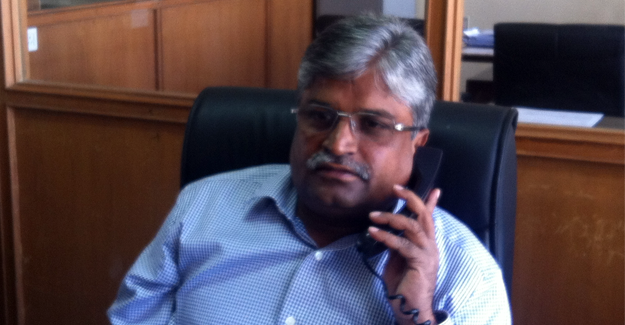
Voltas: ‘We expect significant growth in investments in the coming years, across entire textile value chain’
Voltas Ltd is a leading provider of state of the art machinery, accessories and solutions to the textile industry and represents exclusive brands like LMW, LRT, LCC , KLIL, Brueckner, Thies, Dilo , Benninger, RIFA etc. C Kamatchisundaram, Head of Textile Machinery & Business Improvement Group, Voltas shared his views on recent policy changes introduced in Revised Restructured Technology Upgradation Fund (RR-TUFS).
Are the new norms under RR-TUFS justified and enough for Spinning Sector?
In any industry, capacity addition is always market-driven. So long as investors make profits by investing in spinning, capacity creation will continue irrespective of subsidies. The subsidies provided by schemes like RR-TUFS have always been regarded as added incentives giving further impetus to investments. The announcement of RR-TUFS has dispelled uncertainty and brought clarity, encouraging investors to move forward rather than wait indefinitely. Hence the industry has evidently welcomed the policy, regardless of the actual quantum of subsidies.
How do you see the industry performing in terms of investment? Is India’s Spinning capacity enough and needs only forward integration or value addition?
With the exception of a few big houses, the industry continues to operate without much integration. Hence, this needs to be discussed in parts rather than as an industry as a whole. We are with the opinion that the industry can expect significant growth in investments in the coming years, across its entire value chain. The investment will address needs arising from labor shortage, the need for quality products, and regulatory requirements such as effluent treatment.
Spinning capacity has to grow not only to meet the growth in textiles consumption within India, but also to meet export needs. These have grown quite significantly within the last two years, from around 750-800 million kg to 1100-1200 million kg per year. Further, the spinning industry will necessarily invest in modernization and automation, since about 55-60% of its existing capacity is more than 10 years old. We expect to see accelerated investment in weaving, both in the mill sector and in weaving clusters like Ichalkaranji, Erode, Bhiwandi and so on. However, the mill sector may invest more for capacity addition, whereas the clusters may invest on modernization and upgradation.
On the knitting side, the shift from basic versions of circular knitting to advanced machinery like embroidery knitting may occur at a slower rate. However, there could be investments in warp knitting and flat knitting machines to meet emerging domestic needs. As for processing and finishing, investments in that direction would accelerate in a big way only if there was a significant increase in exports of garments and made-ups. Big drivers towards such investment would include FTA with Europe, as well as the shift of garmenting operations from our neighboring countries to India.
Do you feel investment in Spinning Sector will grow in states where entrepreneurs get duel benefits?
Obviously, the states with attractive and exclusive textile policies are expected to attract more investments in spinning, all other factors remaining equal. However, decisions on investment would be influenced by cost of land, cost of power, availability of power, availability of skilled labor, and other such factors.
Is the Spinning Sector ready for forward integration to finished or semi-finished products like fabric or garments?
The RR - TUF would definitely encourage investors in spinning to explore the possibilities for forward integration, which have hitherto been less explored. However, the immediate possibilities would probably lie with weaving, yarn dyeing etc.
What is your view on the future of Indian Textile Industry?
India has always been a globally competitive player in spinning, thanks to factors like availability of raw material, skilled labor and world-class machinery from renowned players like LMW. With the quick changes that are happening in our neighboring countries like China and Bangladesh, India could become competitive in the remaining parts of the value chain in the near future. Once that happens, the country is likely to experience equal levels of investments across the value chain.
Textile Excellence
If you wish to Subscribe to Textile Excellence Print Edition, kindly fill in the below form and we shall get back to you with details.








